Soybean is a plant that serves as a vital source of food and provides raw materials for industry. Much of the world’s vegetable oil and livestock feed come from soybeans. Manufacturers use the plant to make such products as paint and cosmetics.
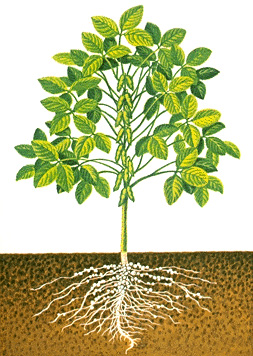
The soybean yields one of the cheapest and most useful sources of protein. However, the kinds of proteins in soybeans differ from those in other protein-rich foods, such as beef and fish (see Protein (Proteins in the diet)).
People in many countries eat soybeans instead of such other protein sources as meat, eggs, and cheese. Tofu, a food made from soybean curd, is popular in eastern Asia and other regions (see Tofu). In addition, soybean oil contains no cholesterol, and it has one of the lowest levels of saturated fat among vegetable oils.
People sometimes refer to the soybean as the soya, or soja, bean. Because soybeans live for only one year, they belong to a group of plants known as annuals. Soybeans also belong to the same scientific family as peas. Plants in this family are called legumes (see Legume).
The United States is one of the world’s leading soybean-growing countries. In fact, soybeans rank as the second largest U.S. crop, next to corn. Other important soybean producers include Argentina, Brazil, China, and India.
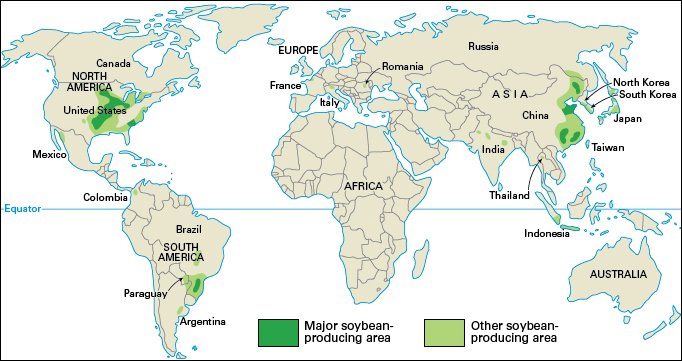
The soybean plant
Growers typically plant soybeans in the spring. After six to eight weeks, small flowers appear on the plants. The flowers may be purple or white, depending on the variety of soybean plant. Soybean flowers develop for about two weeks, and some of them produce pods. Each pod contains two or three seeds, also called beans. As the seeds develop and mature, the plant’s leaves turn yellow and drop to the ground. At maturity, most soybean plants stand from 2 to 4 feet (61 to 122 centimeters) tall.
Farmers cultivate many types of soybeans. Scientists have developed the types now used by crossing different soybean varieties or by altering the plants’ genes (units of heredity). These methods produce soybean plants with special characteristics, such as light-colored seeds, resistance to disease, and increased yield.
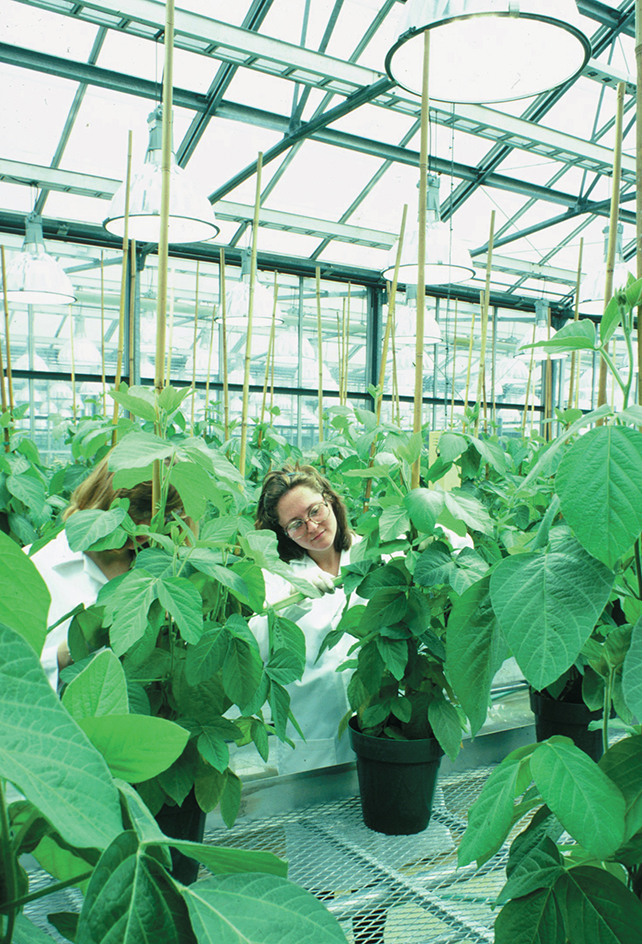
The soybean plant is covered with short, fine, brown or gray hairlike parts. The pods range in color from light yellow to shades of gray, brown, and black. Soybean seeds have a round or oval shape with yellow, green, brown, black, or speckled coloring, depending on the variety.
Farmers cultivate two main groups of soybeans: commercial soybeans and vegetable-type soybeans. Processors use commercial soybean varieties to make meal and oil. Most of these varieties have yellow or buff-colored seeds. The seeds measure about 1/4 inch (5 to 7 millimeters) in diameter. Commercial soybeans make up most of the world’s soybean crop. Vegetable-type soybeans are eaten as a vegetable or are used to produce bean sprouts. Most vegetable-type soybeans have green seeds. These seeds grow somewhat larger than the seeds of commercial soybeans.
Soybean products
Soybean meal and oil rank as the most important soy products. Many countries use a process called solvent extraction to make meal and oil. In this process, specialized machines first clean and dehull the seeds. Then rollers crush the seeds into flakes. Crude oil is extracted (removed) from the flakes by a solvent, a substance that can dissolve other substances. After the oil has been removed, the flakes are called soybean meal or, more commonly, soy meal.
Soy meal.
Most of the world’s soybean meal serves as food for animals. Manufacturers heat the flakes and make them into high-protein feed for cattle, hogs, and poultry. Food for house pets also contains soybeans.
Soybean meal comes in many foods that people eat. Processors can grind the meal into fine soy flour or coarser soy grits. Baby food, cereals, and various low-calorie products contain soy flour. Soy grits are used in candy and such processed meats as patties and sausages. Both soy flour and grits go into baked goods and pet foods.
Processors make a number of other products through further processing of soy flour. For example, they produce soy protein concentrate by extracting about a sixth of the nonprotein content from soy flour. This creamy concentrate can be made into a powder or a grainy substance. Processors use the concentrate in baby food, cereals, and processed meats. A product called isolated soy protein is made by removing about a fourth of the nonprotein content from soy flour. Isolated soy protein helps provide firmness and protein in various processed foods, especially meats.
A number of soy products make up a group of foods called textured vegetable protein (TVP). Processors chemically treat these foods to look and taste like meat so they will appeal to consumers. TVP foods can be mixed with meat or eaten alone. They cost less than meat and contain more protein. TVP products consist of either extruded soy protein or spun soy protein.
To make extruded soy protein, processors extrude (push) soy flour from machines in the same way that people squeeze toothpaste from tubes. The machine shapes the soy flour into small meatlike pieces. The product may be dried before being packaged for sale. Extruded soy protein becomes moist and chewy when the consumer adds water. People generally mix this food with ground meat.
To make spun soy protein, processors spin isolated soy protein into fibers. Spun soy products resemble such meats as beef, chicken, and ham. People buy them in canned, dried, and frozen form.
Many food items contain soy meal but do not consist entirely of treated soybeans. These products, called soy derivatives, include food flavorings, soy milk, and soy sauce. Manufacturers also use soy meal to make such products as fertilizer, fire extinguisher fluid, insect sprays, and paint.
Soy oil.
Manufacturers make crude soybean oil into three basic products: (1) technical refined oil, (2) edible refined oil, and (3) lecithin.
Technical refined oil is produced by putting crude soy oil through several processes. First, manufacturers purify the crude oil by adding a mixture of water and a chemical called an alkali. Next, they wash and dry the oil.
They then bleach the oil using absorbent clay and pass the bleached oil through a filter, producing technical refined oil. Such products as candles, disinfectants, linoleum, soaps, and varnishes contain technical refined oil.
Manufacturers make edible refined oil by deodorizing technical refined oil. They heat and steam the technical refined oil to remove its unpleasant odor and flavor. Oil derived from soybeans ranks as the most widely used edible oil in the world.
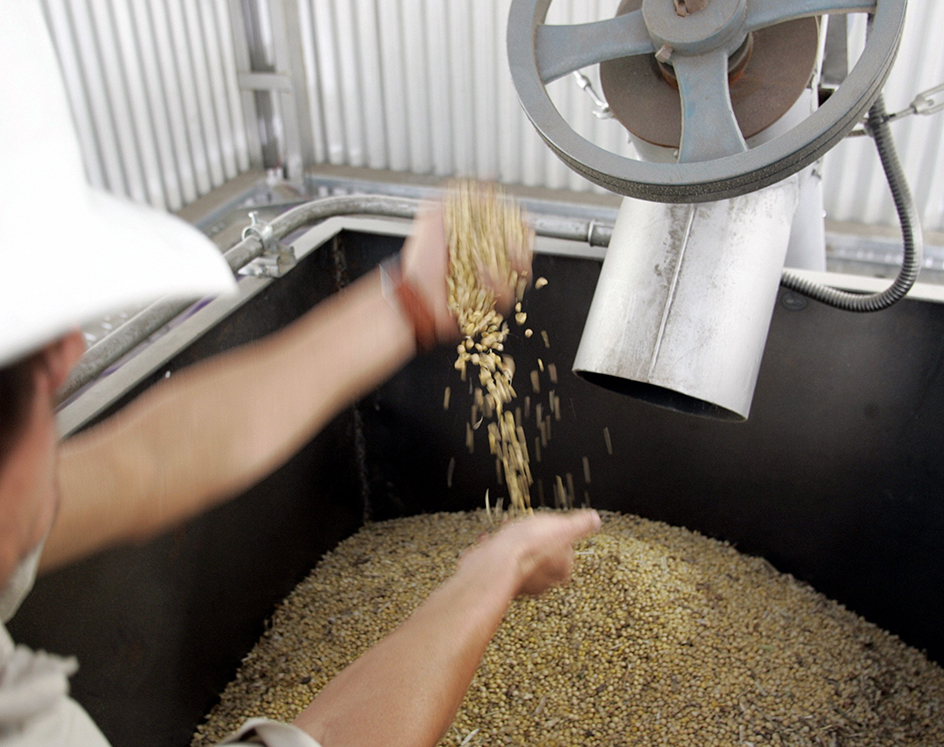
Processors often use edible oil to make products for commercial baking and frying. They also use the oil to manufacture cooking oils for home use and in making margarine, mayonnaise, salad dressings, and other food products. In addition, edible refined oil provides an ingredient for such products as adhesive tape, carbon paper, various drugs and explosives, and leather softeners.
Lecithin, a sticky substance, is extracted after mixing crude soy oil with water. Manufacturers use soybean lecithin in making candy, ice cream, and baking products. They also use it to produce chemicals, cosmetics, and textiles.
Growing soybeans
Soybean farming
most often takes place in areas with fertile, well-drained soil. A good soybean crop requires at least 20 inches (51 centimeters) of rain during the growing season.
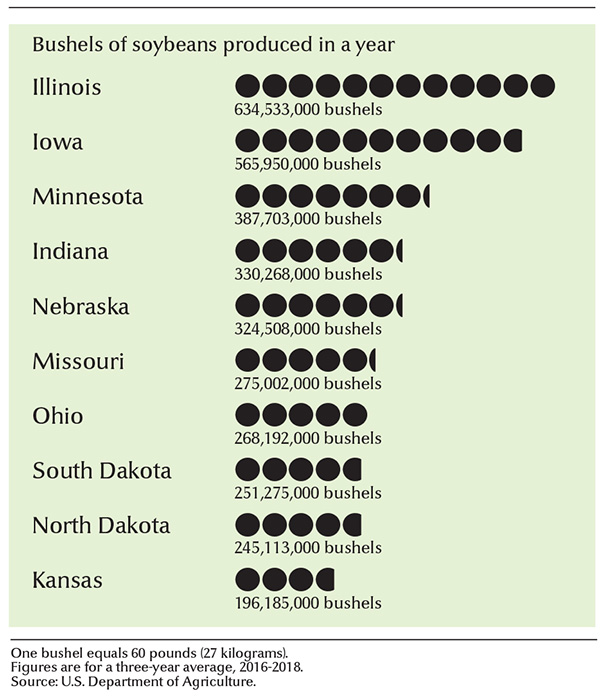
Farmers generally plant soybeans in spring. Most plant them in rows 20 to 30 inches (51 to 76 centimeters) apart. They space the seeds in each row 1 to 11/2 inches (25 to 38 millimeters) apart and 1 to 2 inches (25 to 51 millimeters) deep. Farmers control weeds by means of cultivating machines and herbicides (chemical weedkillers) and by rotating soybeans with other crops. Like other legumes, soybeans obtain nitrogen from the air by means of bacteria growing on their roots. Thus they do not require nitrogen fertilizers.
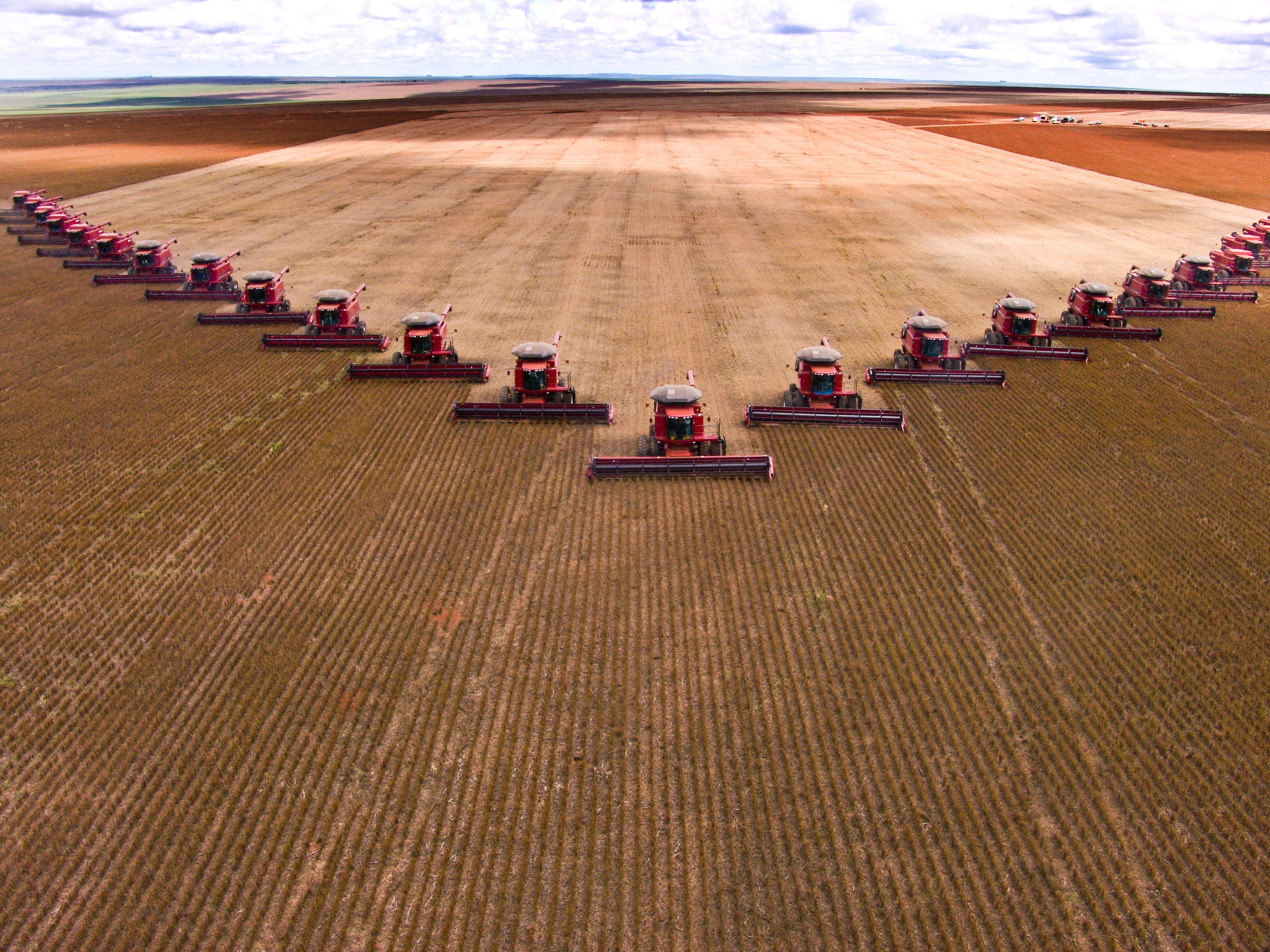
Most farmers harvest soybeans in late summer or early fall. They use a machine called a combine, which cuts, threshes, and cleans the seeds in one operation. Farmers sell the harvested seeds to owners of storage elevators, to food manufacturers, and to other buyers. The buyers then ship the crop to processing plants or directly export it to other countries.
Diseases and pests.
Dozens of diseases and pests attack soybeans. They include fungal diseases, bacterial diseases, and insects.
Fungal diseases may attack the plants’ roots, stems, or leaves. One of the most dangerous fungal diseases, Asian soybean rust, has spread from Asia to other parts of the world.
Bacterial diseases affect soybeans most severely during wet years. The bacteria that cause bacterial blight live in the soil and in diseased soybean plants. They enter healthy plants through the leaves. Wet spots form on the leaves and turn brown. Patches of leaf tissue die and fall out, and the entire leaf may die. Bacterial pustule involves pustules (small bumps filled with fluid) that form on the leaves.
Many animal pests attack soybeans, but few present serious threats. Common pests include the bean leaf beetle, soybean aphid, stink bug, and velvetbean caterpillar. Other threats to soybeans include viruses and tiny worms called nematodes.
Farmers use several methods to control diseases and pests. They may employ pesticide chemicals. For example, a special fungicide chemical can kill the fungus that causes Asian soybean rust. Farmers may spray this fungicide on the soybeans from the ground or from an airplane flying about 12 feet (3.7 meters) above the plants’ leaves. The spraying of insecticides on soybean plants can kill many of the insect pests.
Overuse of pesticides, however, has proved harmful to the environment. As a result, many farmers now prefer to combat soybean diseases and pests by cultivating varieties resistant to those attackers. Scientists have created many resistant varieties by altering the plants’ genes.
Growers also can prevent pests by using simple field management practices. For example, workers control the spread of insects by merely removing dead leaves and other debris where insects lay their eggs.
History
Soybeans rank among the oldest crops raised by human beings. Historians believe the plant first grew in Eastern Asia. Soybeans were mentioned in Chinese literature about 3,000 years ago. The ancient Chinese considered soybeans their most important crop and one of the five sacred grains necessary for life.
Soybeans spread slowly to other parts of the world. People introduced the plants into Europe and North America during the 1600’s and 1700’s. Farmers in these areas first used soybeans as a food crop for livestock. During the 1930’s, manufacturers widely introduced soybean products into human foods. Farmers soon grew soybean plants chiefly for their seeds.
Soybeans provide a vital tool for easing the world’s food shortage. Soybeans grown on 1 acre (0.4 hectare) of land can provide about 10 times as much protein as can beef cattle raised on the same land. Soybeans yield more protein than most other vegetables or grains, making soybean cultivation one of the most efficient uses of land. More and more people have become aware of the protein value of the soybean and rely on it to supply their protein needs.
See also Julian, Percy L.; Protein; Tofu.
